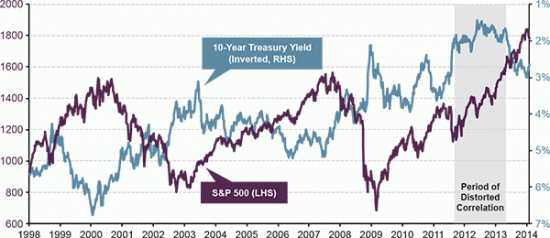Pretty good chart here showing just how unusual the 2013 correlation between bond yields and stock prices was (via Guggenheim):
“Historically, rising equity prices have been associated with falling bond prices (rising bond yields), as stronger economic fundamentals drove investors to stocks and away from bonds, and weaker economic growth produced the reverse. However, over the past few years, equity and bond prices began moving together as both markets were inflated by floods of liquidity from accommodative U.S. monetary policy, which distorted the traditional relationship. After tapering of quantitative easing by the U.S. Federal Reserve was first suggested in mid-2013, markets began returning to more normal correlations, driven not by expectations of continued quantitative easing, but by the economic outlook.”
Mr. Roche is the Founder and Chief Investment Officer of Discipline Funds.Discipline Funds is a low fee financial advisory firm with a focus on helping people be more disciplined with their finances.
He is also the author of Pragmatic Capitalism: What Every Investor Needs to Understand About Money and Finance, Understanding the Modern Monetary System and Understanding Modern Portfolio Construction.



Comments are closed.